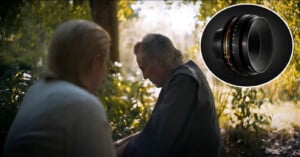
‘Dune: Part Two’ Was Shot Using Vintage Soviet Photo Lenses
The biggest movie of 2024, Dune: Part Two, was shot using the latest and greatest cameras and lenses -- plus some vintage Soviet-era lenses.

The biggest movie of 2024, Dune: Part Two, was shot using the latest and greatest cameras and lenses -- plus some vintage Soviet-era lenses.

Photographer Mathieu Stern is known for his fun projects like turning a Parisian apartment into a giant camera and shooting travel photos with a full-spectrum converted Sony camera, often shoots with vintage lenses. Stern significantly improved one by putting the world's blackest material inside it.

Photography accessory and equipment company Moment has announced The Tuner by Module 8. The Tuner products deliver the world's first variable-look cinematic lens system to "bring a classic film aesthetic to your mirrorless digital camera."

Vintage lenses are more popular than ever, thanks in large part to the mirrorless revolution as well as affordable, high-quality cinema and hybrid video cameras. These lenses are regularly “cine modded” for video use due to their unique character and less clinical rendering, (sometimes) affordable prices compared to cine lenses, helicoid-driven focus with hard stops, and physical aperture rings (which are often de-clicked).

Sean from Fotodiox came across a vintage magic lantern projector at an antique store and adapted its front lens to a mirrorless camera for a soft and painterly look.

Omnar is a new lens manufacturer based in the United Kingdom that recently teased that it was producing a new lens using a custom design and repurposed Canon AF-10 optical elements. The lens can now be pre-ordered and will begin shipping in December.

Two self-described rangefinder lens geeks -- Hamish Gill and Chris Andreyo -- have teamed up to create a new lens manufacturer, Omnar Lenses. The company's first product is the Omnar CN26-6, a 26mm f/6 fixed-aperture M-mount lens which is constructed using repurposed Canon AF-10 optical elements.

Fotodiox has shared a step-by-step video tutorial on how to turn a simple household magnifying glass into a focusable lens on a mirrorless camera for a unique vintage effect.

After purchasing Takumar 55mm f/1.8 lens years ago, I started building my collection of vintage lenses, and because I don’t like spending a lot of money on them, I became a frequent visitor of thrift stores, flea markets, and online auction sites.

The world of vintage lenses can provide a whole new experience to photographers but not everyone knows how to get started. To help others explore the unique characteristics of these decades-old lenses, a filmmaker has shared his best tips.

For years now, industrial super-fast lenses have been on the back of my mind. But one thing always held me back, and that was the fact that most images I could find were frankly uninspiring, boring, fuzzy macro shots at best. So I couldn’t justify spending hundreds of dollars on unpractical medical equipment.
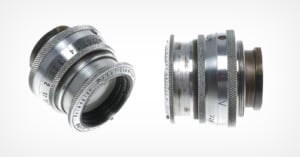
A rare, collapsible version of the Meyer Primoplan 5cm f/1.9 LTM Leica M39 mm RF -- valued at $50,000 -- was listed for less than a day before the seller received a private offer to purchase it. Just a few months before, it was scooped up at a flea market for just $10.

In January, Leica announced the re-issue of the classic Noctilux-M 50mm f/1.2 ASPH. The silver edition was limited to 100 pieces and an official Leica reseller is claiming its value has already doubled.

Leica has announced the reissue of what it calls a "landmark" lens: the Noctilux-M 50mm f/1.2 ASPH. The lens will be released in two variants: standard black, which is available through all dealers, and silver, limited to 100 units and only available at Leica stores.

There are certain vintage lenses out there that are prone to have glass elements that yellow over time. If you have one of these lenses, you don't have to live with yellow-tinted results: here's a 3-minute video in which photographer Mathieu Stern shares a simple trick for restoring the lens.

Photographer, YouTuber, and weird lens connoisseur Mathieu Stern recently made one of his coolest finds yet. It's the Carl Zeiss 105mm f/1.9 Kipronar T, a cinema projector lens he describes as "one of the most amazing swirly bokeh lenses I ever tested"... and yet it only cost him $25.

I have been so excited about this Hasselblad 907X camera. In this hands on review of the Hasselblad 907x and CFV II 50C we show you an image quality test, discuss the ergonomics and try it out on our Hasselblad 500cm with some vintage lenses. Check it out to see what we got!
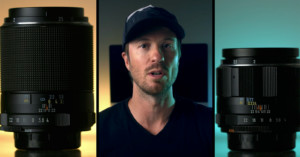
Photographer and YouTuber Mark Holtze has put together a quick video that offers some advice for beginners or other photographers on a budget. Specifically, he shares his top five reasons why you should go out and buy a vintage macro lens.
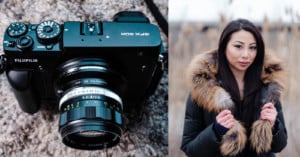
I made a big purchasing decision a few months ago by investing in the new Fujifilm GFX 50R camera. It is a larger-than-full-frame ‘medium format’ sensor camera. The 50R was by far the most affordable medium format option in its class at the cost of $4,500.
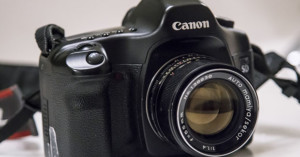
If you want a 50mm f/1.4 lens for your DSLR, you'll need to shell out at least a couple hundred bucks, even if you buy one made by a third-party manufacturer. For those of you who don't mind losing autofocus, you can get the same focal lengths and apertures for much cheaper by buying some old glass and an adapter. By much cheaper, we mean as low as $10-$20! India-based photographer Brock Whittaker recently did this after seeing an auction on eBay for an old Mamiya camera kit.